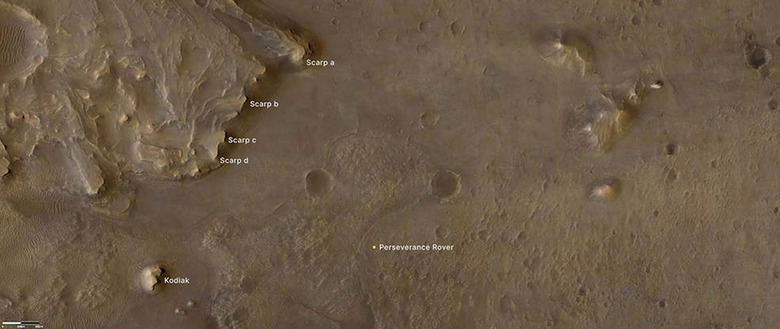Perseverance Rover Gathers Evidence On Jezero Crater's Ancient Lake
One of the main goals of the Perseverance rover as it investigates the surface of the Red Planet is to learn more about the watery past in Jezero Crater and to hunt for signs of microbial life. Perseverance researchers have published a paper offering new details on the hydrological cycle of Jezero Crater, which was an ancient lake but is now dry and barren. The paper is based on findings made by the Perseverance Mars rover offering detailed images of escarpments or scarps in the delta that formed when sediment accumulated at the mouth of an ancient river that fed the lake.
Images of the fan-shaped river delta show it experienced late-stage flooding events at some point in the distant past, significant enough to carry rocks and debris from the highlands outside of the crater into Jezero Crater. Researchers leveraged imaging information taken by the left and right Mastcam-Z cameras and the Remote Micro-Imager in their study. Those images gave mission operators insight into where to hunt for the best rock and sediment samples.
The hope is some of the examples could contain organic compounds and potential evidence on ancient microbial life. The study is the first to be published utilizing data acquired after the rover landed on Mars on February 18. When the images were taken, the scarps were about 1.2 miles to the northwest of the rover. Southwest of the rover was a rock outcropping known as Kodiak.
Kodiak is important because when Jezero Crater was a lake, Kodiak would've been at the southern edge of the delta. Surface imaging from Perseverance showed the stratigraphy of Kodiak for the first time, which is the order and position of rock layers. The exact order and position of those rock layers gives researchers relative timing of geological deposits on the planet.

Scientists say Kodiak's inclined and horizontal layering is consistent with what you would expect to see in a river delta on Earth. Kodiak has the best-preserved stratigraphy ever seen on Mars and was key to allowing scientists to confirm the presence of the lake and a river delta in the crater.
